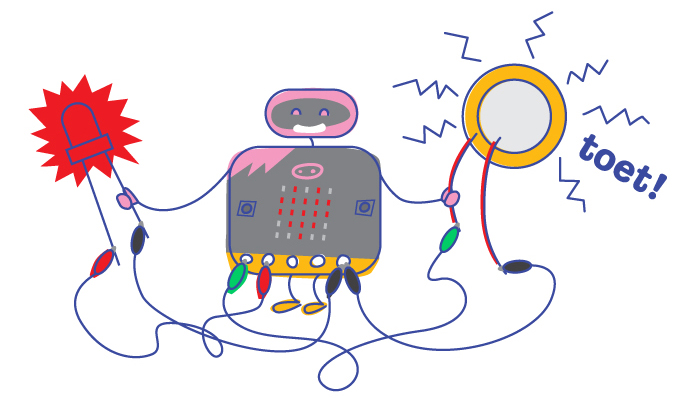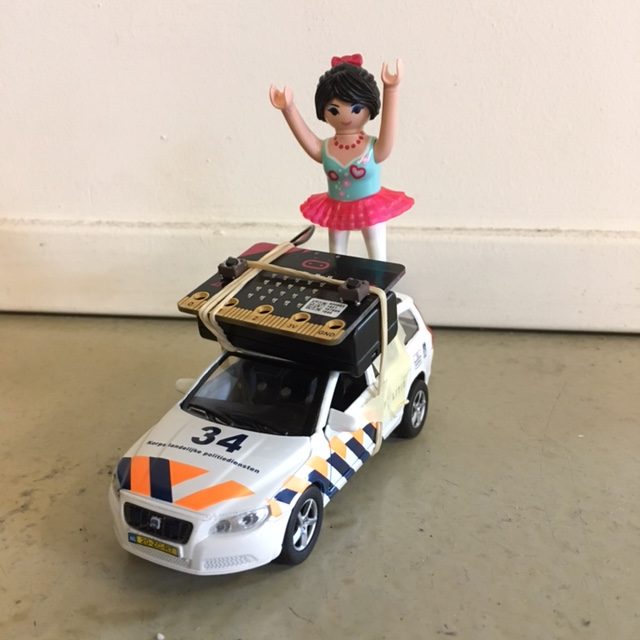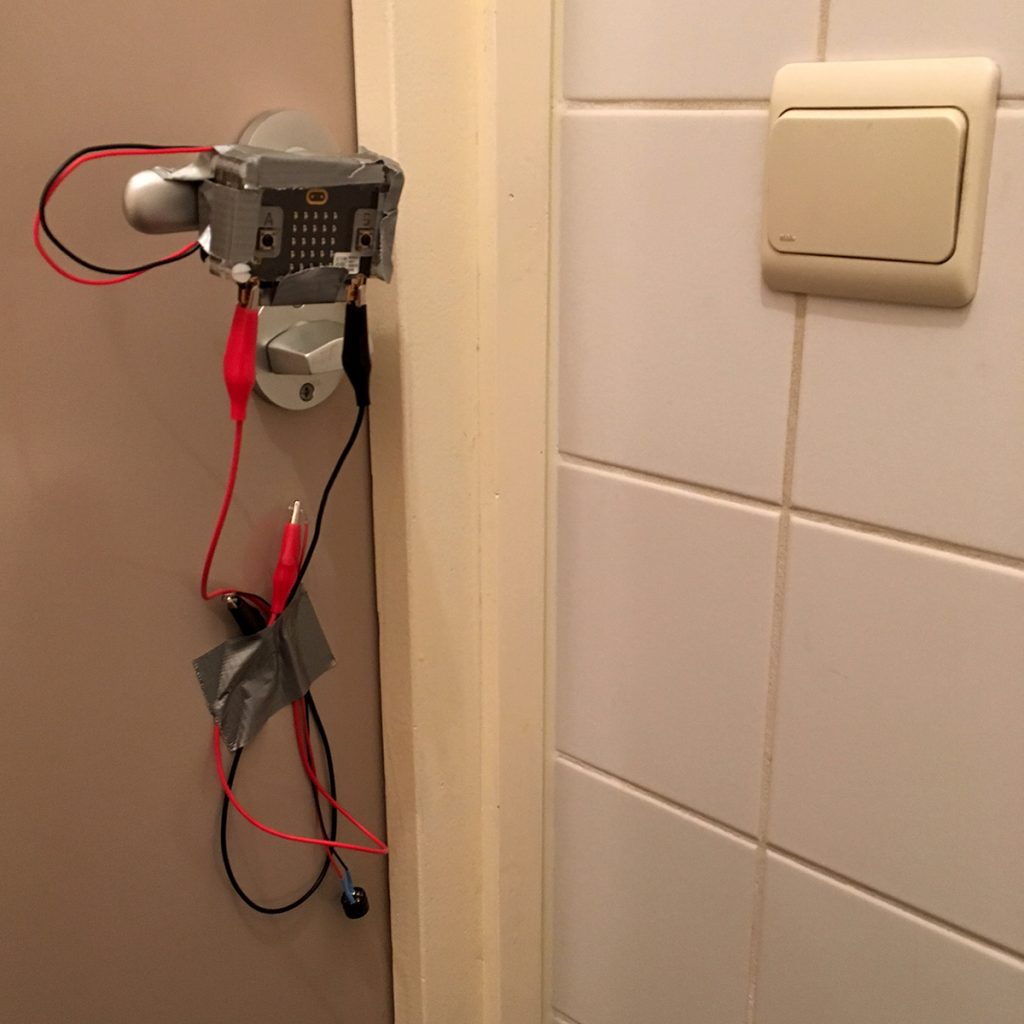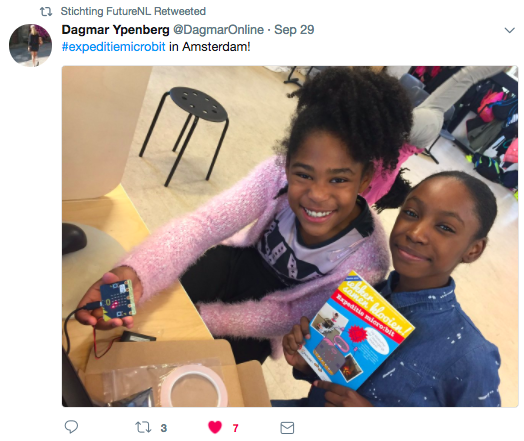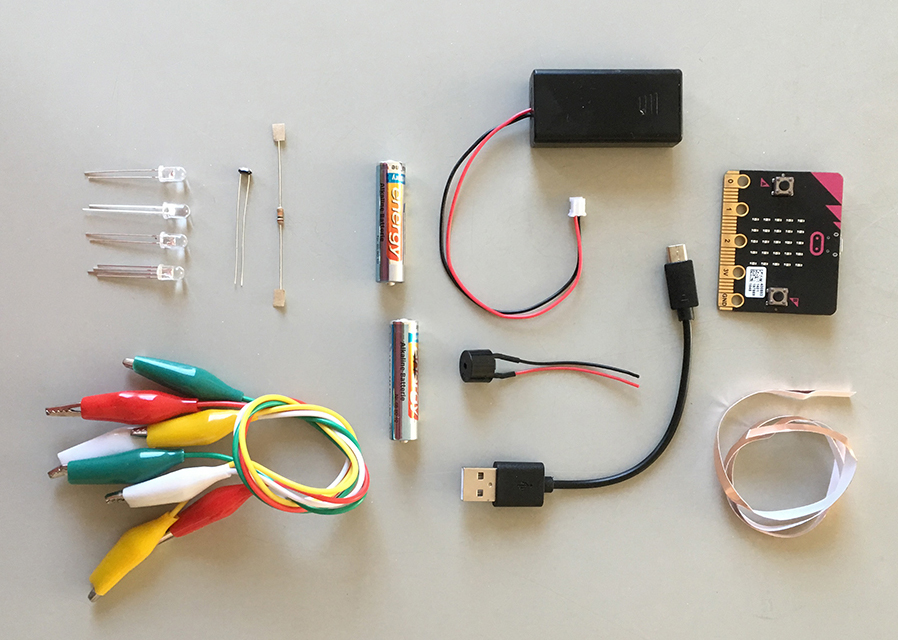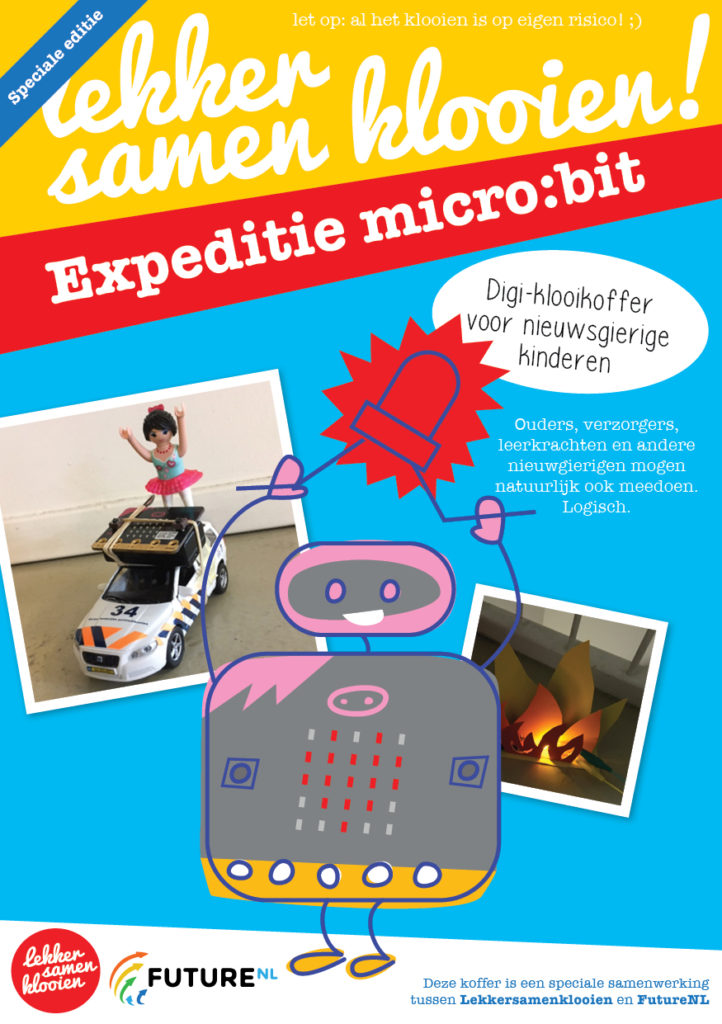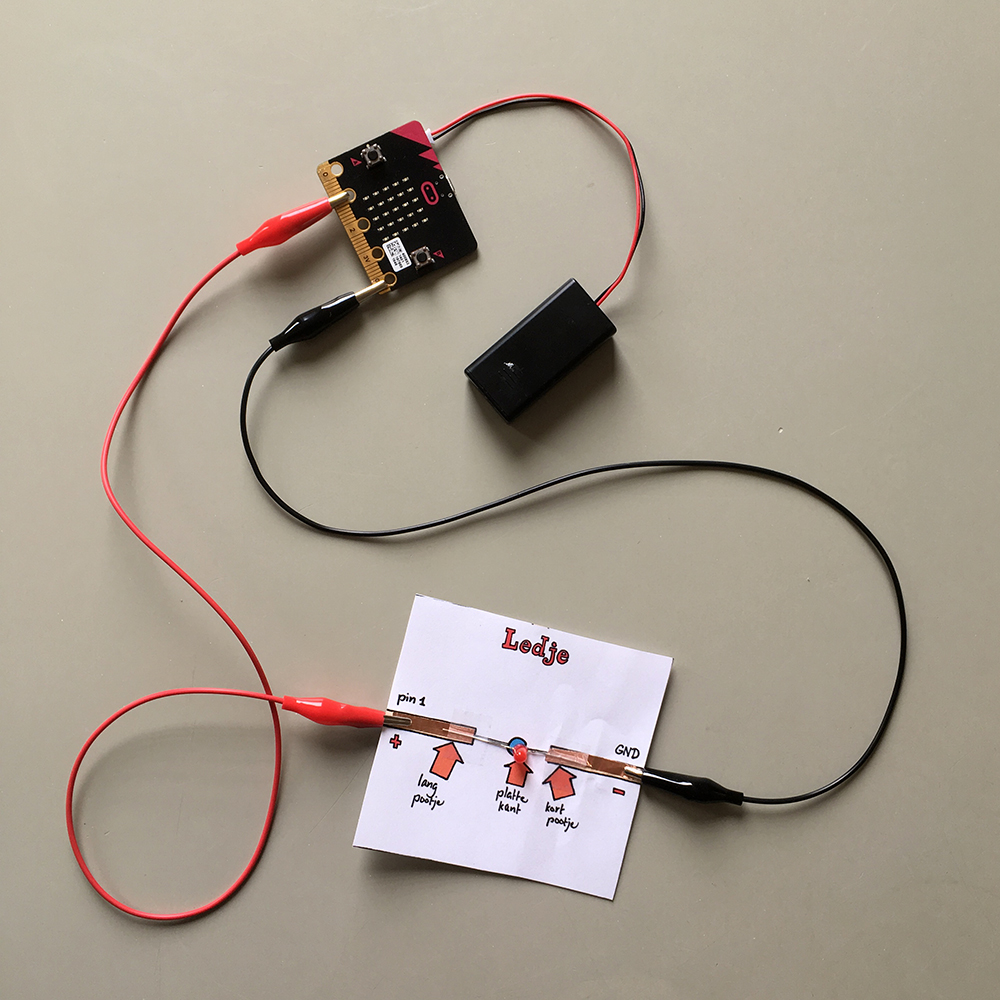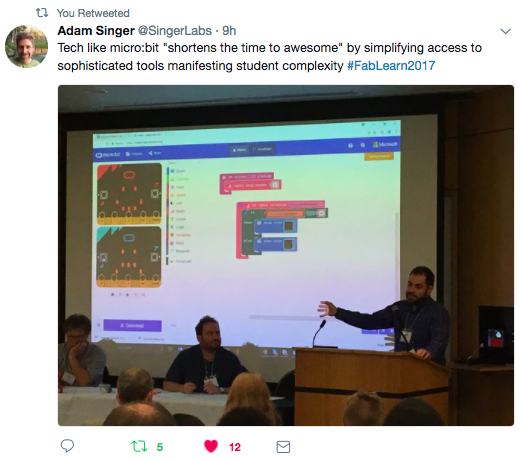A tale of the realisation of our non-profit, open source Digi-Klooikoffer with the micro:bit.
Sunday morning. While my son (8 years old) has his first time micro:bit experiences, I am wondering if tinkering can be an approach to learning how to code. I am not sure.
I do know there are a lot of teachers (and parents?) out there who are looking for coding initiatives with a creative feel, an intuitive making-away-as-you-go-along approach. Because they know not all children are immediately intrigued when offered lessons on coding. Difficult: because messy hacking almost never works. Coding cannot be tinkering.
But the tinkering is important: I discussed this with my colleague developers the other day. Men and women from at least four different countries, everything from front-end to hardcore java. How did they become developers? When did the spark hit? Right: when they were messing around.
They all found their love for code by hacking. Changing existing code in a quick and dirty way, try until it works and understanding why.
Only after that they learnt coding in a structured way when trained for their profession. The first rough love was always both the condition and first step into their career. And no, it was not because of the economic perspective, it was for fun. None of them started coding at 11 with a planned career envisioned.
Creative tool
And that’s how it should be. Pedro de Bruyckere (expert on education and youth) explained it very clearly. Don’t start teaching code to children for future employment, or to teach them how to think logically (there’s still no proof that coding teaches that, he says). Do it because you want to show children that coding exists, that it can be fun. And let them decide whether or not to pick it up later. In my view: that children will perceive coding as on of the creative instruments they can use.
Right. So, how do we do that?
With our foundation we make Klooikoffers: tinkering boxes that help children experience various tools. And we have ideals: everything we make, we share online under a creative commons license, and we are terribly non-profit.
FutureNL asked us to partner in their project Expeditie micro:bit with a special Klooikoffer with the micro:bit. We were happy to take on the challenge. We wanted children to feel the micro:bit is first and foremost a creative tool. Coding as a means, never as a goal. We don’t want to teach children clean coding, but to have fun and success. The need for proper and deeper knowledge will come from that. We gathered the nicest and best makers (Jenya Krul, Per-Ivar Kloen, Marten Hazelaar and my day-job team) and started working.
Our approach? Memories, imagination, product
- Memories: when confronted with something new, it can be too new to relate to it. For a lot of children, coding is just that. With our lessons, we take memories as a starting point, we relate to the every day life children know. Traffic-jam-signing on the high-way? Coding!
- Imagination: we challenge children to combine this knowledge with a new plan or idea. We show examples, and invite them to make up their own stuff.
- Product: and they build it (together). (While we provide info, examples and things they may need.
(Approach inspired by a lecture bij Theisje van Dorsten.)
Our approach seems to work: explanation and challenging creativity can go hand in hand easily. When you are invited to write a dirty text instead of the accepted one in the example, things go a little crazy immediately. And to fix a cute doll on a car for a Crashtest… we rather like that.
So yes: tinkering and with creative outcome.
We made three lessons and tested everything thoroughly. The first test happened without me noticing! My son taped the micro:bit to the bathroom door. Every time someone opens the door, a little song plays. Tinkered together without much instruction.
We are proud
Our Digi-Klooikoffer micro:bit is here and is a success amongst Dutch children. We plan to reach 45.000 with the first batch, we got on the national childrens-news and were allowed to hand the first Klooikoffer over to our queen. Our partner Conrad is now distributing the product further (at cost-prize). (It’s only in Dutch now, but we are working on the English translation.)
It contains things:
A booklet with the lessons (Download! Share!):
And the fantastic PaperBits, invented by Per-Ivar Kloen and Marten Hazelaar (download sheet 1 en sheet 2):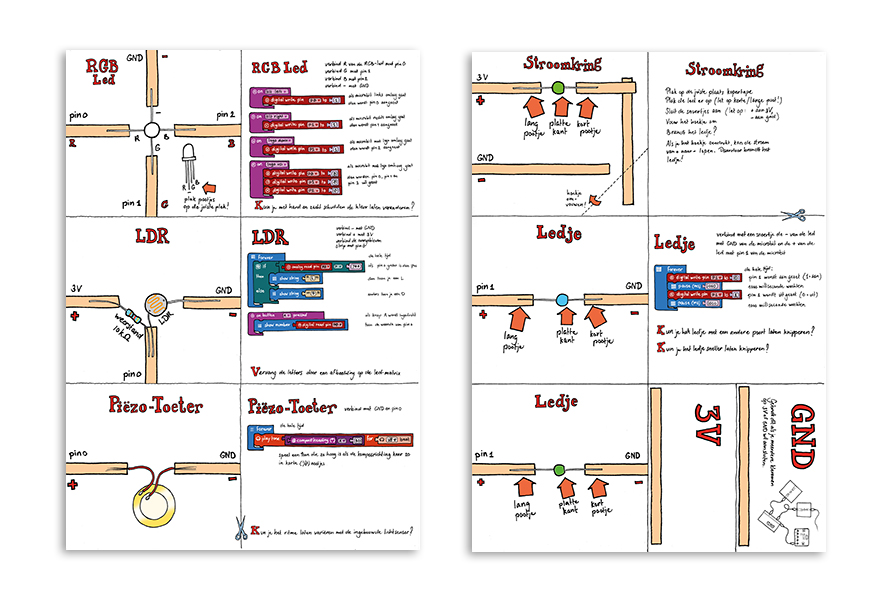
I love these especially, it’s such a clever and cheep solution Per-Ivar and Marten came up with! No kid get’s the wires wrong anymore. Look:
Please download and share as much as you like. And yes, we understand Dutch is rather cryptic for most people, so we are working in the English translation right now. Please have a little patience, we are working very fast!
We love the micro:bit. This tweet from Fab Learn 2017 Conference says it all:
Friends are important! We developed the micro:bit Klooikoffer with:
- FutureNL: a foundation that stimulates coding in primary schools and does a lot of really cool projects to achieve this goal. (With a special mention for their wonderful magician and education expert Jenya Krul as our inspiration and guide!)
- Per-Ivar Kloen and Marten Hazelaar: fantastic teachers, makers and artists. With a very clear, strong and substantiated view on makered. (And very nice guys.)
- Conrad: distribution partner, makered-fan and promoter.
- Familie van Fonk: award winning creative agency for childrens’ products. (My day job.)
